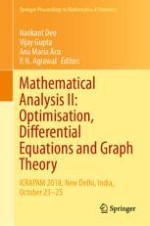This book collects original research papers and survey articles presented at the International Conference on Recent Advances in Pure and Applied Mathematics (ICRAPAM), held at Delhi Technological University, India, on 23–25 October 2018. Divided into two volumes, it discusses major topics in mathematical analysis and its applications, and demonstrates the versatility and inherent beauty of analysis. It also shows the use of analytical techniques to solve problems and, wherever possible, derive their numerical solutions. This volume addresses major topics, such as multi-objective optimization problems, impulsive differential equations, mathematical modelling, fuzzy mathematics, graph theory, and coding theory. It is a valuable resource to students as well as researchers in mathematical sciences.
